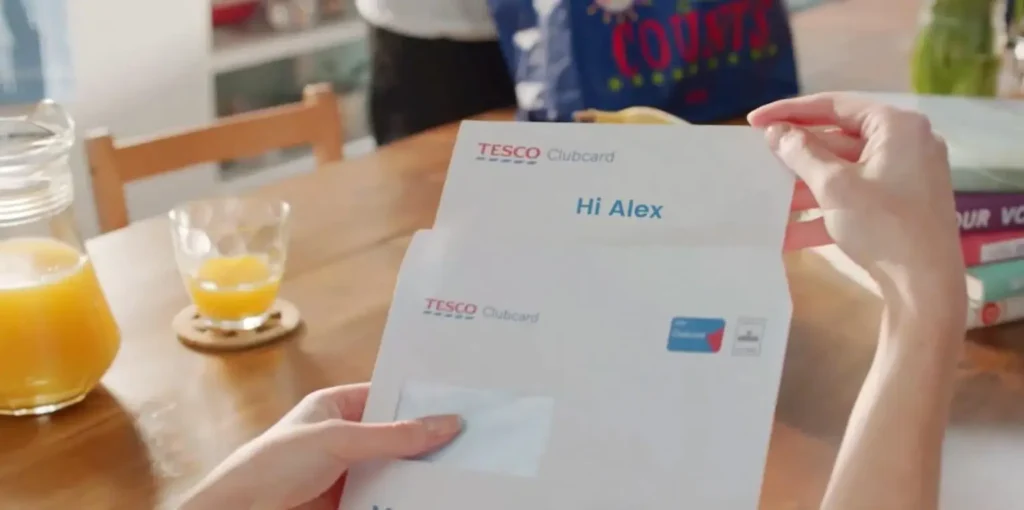Whether it’s digital innovation or a global pandemic, the world is always changing and bringing with it new challenges. For insurance companies, which have already been struggling to keep up with the speed of new innovations, identifying the obstacles ahead will be vital for success.
For instance, McKinsey & Company recently found that more than 30% of insurance customers are dissatisfied with the digital channels available. Meanwhile, insurtech and other financial players are shaking up the competition with their offerings, pushing traditional insurers to rethink their customer engagement approach.
But no obstacle is too great as long as you have the right strategies and tools in place. From embracing digital communications to prioritizing CX, here’s how to overcome today’s biggest engagement challenges in the insurance industry.
Engage With the Digitally Savvy Insurance Consumer
With technical know-how and an abundance of information at their fingertips, the digitally savvy consumer — including millennials and Gen Z — is no easy target.
They’re used to doing their own research and would rather search online for plans, prices and reviews than sit one-on-one with an insurance agent. They also know the power of customer data and are starting to demand being charged according to behavioral data.
A quick look at the numbers emphasizes this:
- 79% of consumers plan to use a digital channel for insurance interactions (though, nearly 50% of insurers don’t have a plan for their digital transition).
- 69% of consumers would share significant data on their habits in exchange for lower prices from their insurers.
- 66% would share significant data for personalized services to prevent injury and loss.
- Consumers over the age of 55 are also becoming more comfortable with digital insurer interactions, with 71% preferring the internet chat/video insurance claim process over in-office meetings.
Post on
While increased access to information has empowered consumers, it’s also made it more difficult to engage with them beyond a transaction. Because these informed and independent customers are comfortable exploring options on their own, there are now fewer opportunities for companies to establish a memorable relationship with them.
Unlike in other financial services industries like banking, insurance customers typically only interact with their carrier once or twice a year. As a result, these customers have a weak sense of loyalty and won’t hesitate to switch to a provider that offers a better-perceived value.
In contrast, when customers are engaged, they purchase 22% more types of insurance products, represent a 23% premium in share of wallet and stay customers 4 years longer. With these benefits on the line, the pressure is on for insurers to get each precious touchpoint right.
How, then, can an insurance company engage with this pool of discerning and demanding consumers? By being where they are and providing the content they want.
Communicate Strategically To Drive Engagement
Today’s consumers don’t want their hand held during a sales process. They want the necessary content to make decisions on their own. But not all digital content is created equal.
To engage with both current and potential customers, you’ll need to communicate in a way that’s valuable, memorable and interactive.
- Valuable. Above all, every communication with your customer should provide value. This could be anything from tips for choosing the right plan to a bill explainer. Yes, you can promote your products and services, but if the information is not helpful to your audience then they’re likely to exit out of it quicker than you can say “skip ad.”
- Memorable. Opt for a digital channel that helps customers remember you and your message. Video marketing is effective because it’s engaging, entertaining and makes complex info easy to understand. Not to mention, 83% of people want more video content from brands.
- Interactive. Encourage engagement with interactive elements. Turn passive viewers into active visitors by letting them enter their information to generate a custom quote or play with a visual diagram of different plan options. It’s a great way to not only capture attention but also provide a customized experience that boosts satisfaction.
A perfect example of content that combines all of the above elements is Interactive Video, a revolutionary form of video that allows viewers to interact directly with the player and get personalized content in real time.
Check out Interactive Video in action by clicking the lightning bolt in the mortgage calculator example below.
Now imagine how this kind of customizable video could be used to engage with your own customers. For example, those interested in your insurance products could interact with the video to get a custom quote in a format they won’t forget. We’ve seen insurance leaders get some incredible results by leveraging our video personalization platform. Here are just a few:
- 5x uplift in engagement
- 40% increase in policies sold
- 7x return on investment
Using innovative digital solutions like Next Gen Video not only helps you meet your customers’ demands but also sets you apart from the crowd. These technologies can transform customer interactions from routine transactions into memorable experiences, encouraging deeper connections and long-term customer loyalty.
Ultimately, insurers who proactively adapt to these trends secure a competitive edge, allowing them to get ahead and thrive as the landscape moves towards digital-first.
Deliver Inspiring Customer Experiences
In an industry where trust and reliability are crucial, delivering a superior CX can be the key element that sets one insurer apart from another. Continued engagement can help insurance companies build a stronger relationship with their customers, but this relationship needs to be backed by a reliably positive CX.
Unfortunately, customers are increasingly likely to switch providers. One survey revealed that 27% of customers say they’re likely to consider purchasing insurance from online providers like Amazon or Google. The differentiator that can get them to stay? An incredible customer experience.
Many in the insurance industry have caught on. In the past few years, there’s been a shift from strategic focuses like growing revenue or new product development to improving the customer experience, with carriers seeking to “fill gaps which have existed for many years.” Here are few ways your company can keep up:
Onboarding That Sets the Right Tone
An effective onboarding process sets the right tone for any customer relationship. Insurance can be complicated and, oftentimes, customers struggle to understand whether the costs are worth it. Don’t hesitate to dispel that worry. Build your customers’ loyalty right from the start by making sure they understand your value early on.
An onboarding video that creatively explains policy details with memorable visuals is one way to do this. Plus, the personalization factor quickly establishes that you see your new customer as a unique and valued individual, not just another sale in the bag. This is a key point, as only 28% of insurance customers reported being satisfied with their provider’s level of personalization.
Watch how USAA did this with their customer onboarding video. Not only does it introduce new customers to their unique benefits but it also puts the power in their hand with interactive elements that lets them shape the video and pick what topics to learn more about.
Effective onboarding can also significantly reduce churn. By clearly explaining policy details and addressing common concerns right away, you help customers feel more confident and satisfied with their choice. This initial clarity can prevent misunderstandings, set your customers up for success and reinforce the foundation for a long-lasting relationship.
Proactive Customer Service
To really strengthen and solidify your customers’ loyalty, you’ll need to not only meet their expectations of customer service but surpass them. In addition to addressing the questions and difficulties that your customers have, be proactive about anticipating any issues so you can solve them before they’re even brought up.
Providing digital resources is an efficient way to proactively provide customers with the solutions they need. In fact, it’s what most people prefer, with 81% of consumers saying they want more self-service options. Plus, by allowing customers to self-serve, service agents are freed up to answer more pressing concerns that need human contact.
That doesn’t mean customer service is relegated just to FAQ web pages (that — be honest — no unhappy customer searching for an answer wants to sift through). A dynamic video can provide a personalized answer and even be proactive, answering questions that commonly arise before your customer encounters them.
Making a claim is one common example of a complex process that video can simplify. Insurance companies can use video to outline exactly what the customer needs to do and personalize it to include the details of that customer’s particular coverage plan.
Personalized Video can also be used to proactively address consumer concerns as Bupa did in the video above to reassure customers who may have been worried about how the pandemic would affect their health insurance coverage. This not only helped mitigate customer anxiety but also reinforced trust in the brand.
A Smooth Omnichannel Experience
Currently, the typical insurance customer journey is far from a seamless experience. Consider these findings:
- 6 out of 10 customers switch channels to pre-purchase.
- 1 in 6 customers report no follow-up from insurers after an initial discussion.
- Of those who do hear back, 40% of customers report a disjointed experience where they had to interact with 2 or more people.
Customers want more. Whether they’re engaging via phone, online or in person, they expect a smooth experience across all touchpoints. In short, they want an omnichannel experience — a customer journey that’s consistent and seamless, even as they switch back and forth between different channels.
For instance, if a customer starts a claim process online but needs to call for further assistance, they expect the service representative to be fully aware of their online interactions and status without needing to repeat information. This continuity not only saves time but also reduces frustration and builds trust.
In the end, a strong omnichannel approach meets modern customer expectations and sets your company apart. By meeting customers where they are and delivering consistent, personalized experiences across all touchpoints, you drive greater satisfaction and strengthen your relationship with your customers.
Engaging With a Remote Workforce
Your employees are the heart of your customer engagement strategy. Agents are the most trusted source for insurance info, with 20% of customers saying they’d switch carriers if their adviser left. It makes sense. After all, you can have the best digital tools available, but if you have no one to nurture leads or handle the hardest customer service questions, things fall apart.
While remote work has spread across countless industries, a recent McKinsey Global Institute analysis found that insurers were particularly poised for success with remote work. Including activities like analyzing information, processing claims and underwriting, three quarters of the work by insurance companies can be done remotely without risking productivity.
But a remote workforce comes with its own challenges. From training and employee motivation to team culture, companies will need to approach these elements differently when employees are connected only online. This is in addition to the impending labor shortage as companies face the challenge of recruiting and keeping new talent.
In this current environment, adding personalized elements will be key to maintaining that much-needed “human” touch in HR communications. Incorporating data-driven video or personalized GIFs in the application and onboarding process can make a big difference in setting your company apart from others.
Whether it’s a welcome GIF that introduces a new employee, a training module that’s personalized to each new role or a thank-you message to boost morale, our Personalized Video platform can help you with the job.
Stay Ahead With Data-Driven Innovation
From an evolving consumer base to the growing crop of competition, insurance companies will have to face the challenge of getting and staying ahead in the industry. And to really stand out to their customers, innovation will be key.
No doubt, AI will play a big part here. According to EY, 99% of insurers around the world are already investing or making plans to invest in AI. The benefits? Improved productivity, revenue uplift and lower costs, whether that’s through the use of Enterprise AI Video solutions to streamline video creation or how AI can reduce costs associated with customer care. McKinsey & Company predicts generative AI causing a “drastic change in thinking about call center activities.”
McKinsey & Company also anticipates that increased insights will lead to a bigger focus on claim prevention. Relying on data, insurers can proactively suggest actions that would help reduce the risk of a loss.
For example, a company can send a warning about potential hail damage from an oncoming storm or a tip to adjust the heat to keep pipes from bursting during a snowstorm. These suggestions could be a simple push notification or take the form of dynamic, data-driven video.
Here’s an example from another industry — utilities — which gives tips on how to improve water consumption. You can see how the combination of visuals, narration and music helps to deliver the message in a way that’s more pleasant, memorable and personal than a pop-up would. Plus, adding Interactive Video elements will contribute to data collection and personalization.
Upselling is another opportunity to use data creatively and effectively.
In a recent Deloitte survey, 62% of insurance executives report that offering additional insurance products that add value and extend core insurance products is a top driving factor for consumer acquisition. By leveraging customer data, insurers can provide personalized recommendations for new products based on their customers’ needs and past buying behavior.
Here’s an example from AXA that shows personalized upselling in action.
To learn more about AXA’s upselling campaign — and their incredible results, including 8x higher conversion rates — download the case study.
Ultimately, moving forward, effective data collection and analysis will play a huge role in determining success in the industry. Insurance companies need to prioritize having a solid data strategy for the future, including an approach to first-party data. Learn more about the shift to first-party data and how Interactive Video can help.
Overcome Obstacles With Personalized Video
Ready to take your customer engagement in insurance to the next level and see how it boosts your bottom line? Idomoo is here to help you engage with your customers, connect with your employees and innovate for the future. Our Next Generation Video Platform can help you transform your interactions, making them more engaging, memorable and effective.
With Personalized Interactive Video, you can deliver tailored messages that resonate with your audience, whether they’re potential customers, existing clients or employees. Just imagine the impact of a personalized policy explainer for a new customer or a custom training module for your remote workforce.
Want to see it in action? Check out how other insurance leaders have utilized Personalized Video and seen an ROI of 300% to 700%. Or get a play-by-play on how to harness the power of personalization by watching our webinar below.








